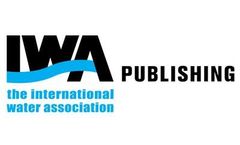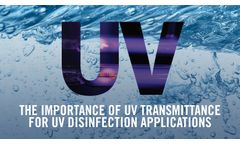drinking water ultraviolet disinfection Articles
-
Method to determine the power efficiency of UV disinfection plants and its application to low pressure plants for drinking water
In this paper we present a method to determine the power efficiency of ultraviolet (UV) disinfection plants and apply this to low pressure plants for drinking water. In UV disinfection plants the water flow is regulated to ensure that microorganisms receive the necessary fluence for inactivation while passing through. The flow depends on the UV transmission (UVT) of the water. The lower the ...
-
A computational fluid dynamics analysis of placing UV reactors in series
Ultraviolet (UV) light water treatment reactors are commonly used in both wastewater and drinking water disinfection. UV technology can effectively inactivate a large number of pathogens at low UV doses, however adenovirus requires a substantially higher dose than most pathogens of interest. In order to meet adenovirus inactivation requirements, UV reactors are often placed in series and the ...
-
Standardised UV disinfection skid packages for offshore potable water treatment - Case Study
In response to the DWI guidance, atg UV Technology have developed a range of standardised UV skid package solutions, specifically designed for the quick and easy replacement of non-conforming UV equipment. The process of disinfecting water with UV light is a proven technology, and has been widely used throughout the offshore petrochemical sector for crew drinking water supplies for over 30 ...
-
Factors affecting the performance and risks to human health of on-site wastewater treatment systems
Aerobic wastewater treatment systems (aerobic systems) are the preferred choice in a region overlying a karstic aquifer used for drinking water supplies, as they are thought to provide better protection to groundwater and human health than standard septic systems. However, aerobic systems in operation do not always perform to design standard; while this is often blamed on lack of maintenance, few ...
-
New DWI guidelines for UV drinking water disinfection
atg UV, has seen increasing interest in the application of UV systems for the treatment of drinking water applications since the UK Drinking Water Inspectorate (DWI) released their ‘Guidance on the use of Ultraviolet (UV) Irradiation for the Disinfection of Public Water Supplies' February 2010. With systems treating in excess of 2000 m3/hr daily, Ultraviolet disinfection is no longer an ...
-
UVT 101: UV Transmittance Monitoring for UV Disinfection
ABOUT UVT UV transmittance, UV transmission or UVT is a measurement of the amount of ultraviolet light (commonly at 254 nm due to its germicidal effect) that passes through a water sample compared to the amount of light that passes through a pure water sample. To measure UVT, ultraviolet light at 254 nm is passed through a 10 mm quartz cell containing the sample water. The intensity of attenuated ...
Need help finding the right suppliers? Try XPRT Sourcing. Let the XPRTs do the work for you

